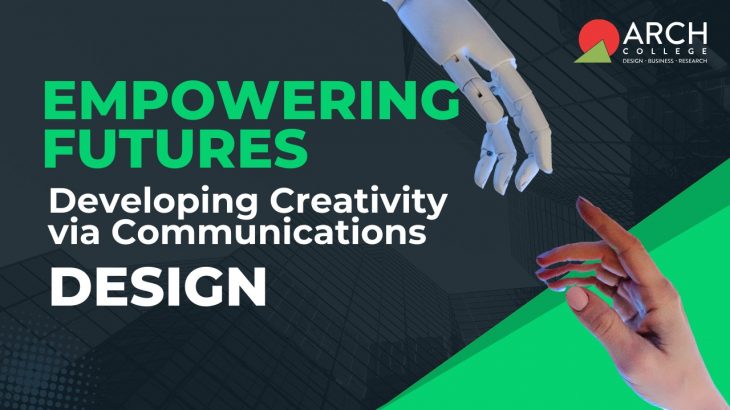“Think outside the box, be more creative!”. It’s a common ask that designers hear daily. Creativity is the lifeblood of design, the intangible quality that breathes life into every creation. It’s the spark that ignites innovation, pushing designers to think beyond the ordinary and explore the extraordinary. In every stroke of a brush, every line drawn, and every pixel placed, creativity manifests itself, shaping the form and function of the design. Creativity in design is not just about making things look pretty; it’s about problem-solving, storytelling, and evoking emotion.
When creativity is infused into designs, it transforms them from mere compositions into powerful communication tools. For instance, a creatively crafted logo captures the essence of a brand, conveying its identity and values in a single symbol. A creatively designed website engages users, guiding them through a seamless and immersive experience. In every aspect of design, creativity adds depth, meaning, and impact.
While creativity may be innate, there are moments when summoning the necessary inspiration to transform your idea into a masterpiece proves challenging. Despite the common belief that inspiration strikes spontaneously, designers know that cultivating creativity requires consistent effort and dedication for each project. Check out this blog for further insights on nurturing creativity. Give it a read to discover more insights and tips!
How to Uncover Creative Sparks?
- Look for inspiration
Inspiration can come from various sources, by exposing yourself to a wide range of stimuli, you expand your creative palette and draw from a rich reservoir of ideas. Surround yourself with sources of inspiration such as art, nature, music, literature, and design trends. Nature is abundant with patterns, textures, colors, and forms that can inspire innovative design solutions. In addition to physical surroundings, designers can also look to digital media for inspiration. The internet offers a vast array of resources, including design blogs, social media platforms, online galleries, and digital archives, where designers can discover new trends, techniques, and creative perspectives.
- Embrace constraints
Constraints help narrow the focus of creativity by providing clear boundaries or parameters within which to work. Rather than having unlimited options, designers are forced to work within specific limitations, which can stimulate inventive thinking and resourcefulness. By eliminating unnecessary options or features, designers can focus on what’s essential, resulting in more effective and impactful designs. When faced with constraints, designers are motivated to find alternative solutions, leading to innovative design solutions that might not have been considered otherwise.
- Experiment freely
Allow yourself to experiment with different techniques, styles, and mediums without fear of failure. Embrace trial and error as part of the creative process and learn from your mistakes. Experimentation encourages you to trust your instincts, follow your curiosity, and explore ideas without self-censorship or judgment. Create digital versions of the concepts, experimenting with variations in layout, typography, and color schemes. You continue to iterate on the designs, fine-tuning details and making revisions until you reach a final version.
- Brainstorm with others
Each person brings their unique experiences, knowledge, and viewpoints to the table, enriching the creative process and leading to more robust design solutions. Collaborate with colleagues, clients, and other creatives to gain fresh perspectives and exchange ideas. Collaborative brainstorming sessions can lead to innovative solutions that you may not have discovered on your own. By pooling resources and expertise, teams can anticipate potential issues, and develop effective strategies for overcoming obstacles.
- Take breaks
It might seem like you’re supposed to work till you finish the design, but that’s not how creativity functions! Design involves making numerous decisions, big and small, throughout the process. Taking breaks helps prevent decision fatigue, which can occur when you’re faced with too many choices without adequate rest. By stepping away from your work, you give your brain a chance to recover and make clearer, more effective decisions. Oftentimes, solutions to design problems will come to you when you least expect them, such as during a break or while engaged in a different activity. So when you’re feeling stuck, it’s a good idea to take a break.
- Stay curious
Curiosity drives continuous learning and personal growth. By remaining curious, you’re motivated to seek out new knowledge, experiences, and skills, which can enrich your creative practice and expand your horizons. Instead of being rigid or resistant to change, you’re willing to embrace new ideas, adapt to feedback, and pivot when necessary. Stay open to novel ideas, make unexpected connections, and push the boundaries of your creative work.
How does creativity empower the future?
By igniting creativity in communication design, we unlock the potential for groundbreaking discoveries and advancements. These breakthroughs may lead to more effective ways of conveying messages, engaging audiences, and solving complex communication challenges. Ultimately, this empowers the future by enabling the development of more impactful and influential communication strategies, shaping how information is shared, understood, and acted upon in society.
Creative communication design has the potential to empower individuals and communities, drive positive social change, and create a future that is more inclusive, sustainable, and equitable for all. By harnessing the power of creativity and design, we can unlock new possibilities, inspire innovation, and shape a brighter future for generations to come.
At ARCH, we focus on teaching design skills that empower students to make a difference in the future. Our graphics designing courses are designed to not only provide you with technical expertise but also to foster creativity, innovation, and a sense of social responsibility. If you’re a creative individual passionate about design and considering pursuing graphic design courses after the 12th, we offer a variety of courses tailored to your interests and goals. Join us and embark on a journey where you’ll not only learn the art of design but also gain the tools to shape a better tomorrow.
